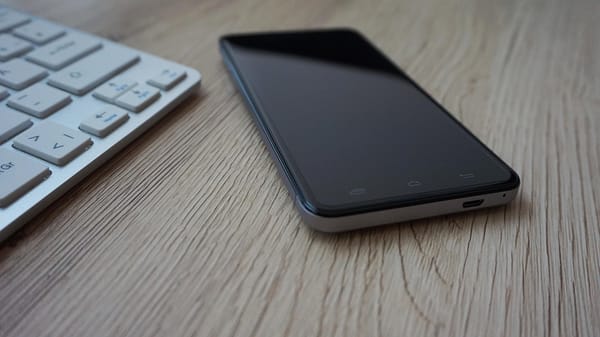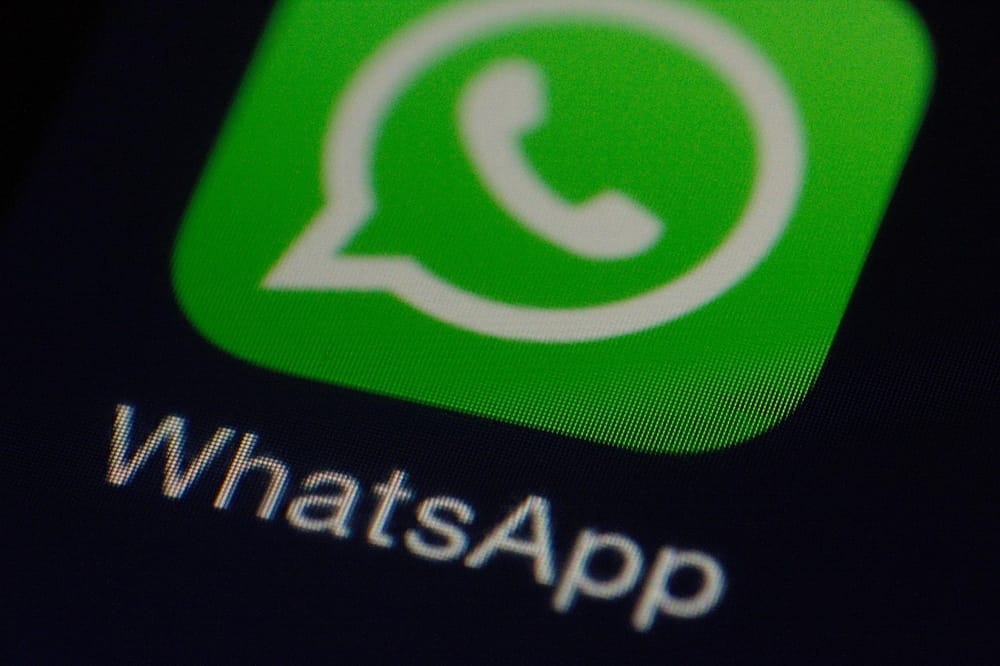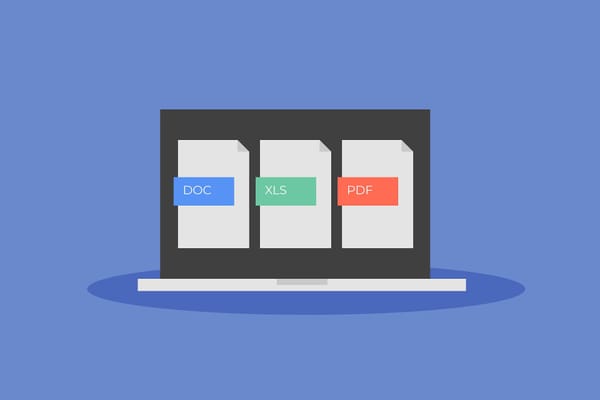Protect Your Business and Data if Your Phone Is Lost or Stolen

Whether you use your smartphone for business, personal reasons, or both, it likely carries sensitive information like client data, financial details, and access to critical apps. Losing it—or having it stolen—isn't just inconvenient; it can put your entire business at risk.
If your emails, files, photos, and credentials for key accounts end up in the wrong hands, it could result in data breaches (exposing sensitive client information), financial loss (if attackers access payment apps or accounts), business downtime caused by losing access to vital systems and scams targeting loved ones, with attackers sending phishing links, fake messages, extorsion attempts and even identity theft.
Did you know?
- In 2023, approximately 1.4 million mobile phones were reported stolen across the US.
- London experienced a 150% surge in street thefts, with 78,000 phones reported stolen between September 2023 and September 2024. The city recorded a theft rate of 589 phones per 100,000 residents in 2023, making it one of the highest in Europe.
(Sources: Crisis24 and The Times & The Sunday Times)
Related: Should Small Business Owners Get Cyber Insurance?
How to Protect Your Smartphone Against Theft
1. Disable Access to Settings when Locked
One of the first things a thief might do is switch your phone to airplane mode, preventing you from disabling it remotely. To counter this, you can stop them from accessing the control center from the lock screen. This will keep your device trackable for longer, increasing your chances of recovery. Many thieves are likely to abandon a phone they can't quickly disconnect.
How to: Go to Settings > Face ID & Passcode and turn off Control Center under "Allow Access When Locked."
2. Use a Strong Passcode and Biometrics for Screen Lock
Your phone's lock screen is its first defense. Strengthen it by:
- Setting a strong passcode with a mix of numbers, letters, and symbols. Avoid simple combinations like "1234" or your birth year.
- Using biometric features like fingerprints or facial recognition for quick, secure access.
- Setting it to lock after 30 seconds to reduce the window thieves have to access your unlocked phone.
3. Install Mobile Protection on It
A trusted security solution like Bitdefender Mobile Protection can safeguard your phone against threats. It protects your data with real-time threat detection and web protection. Its Anti-theft feature allows you to remotely lock or wipe your phone if it's stolen, ensuring your sensitive information doesn't fall into the wrong hands.
4. Plan Ahead If Your Phone is the Key to 2FA
Two-factor authentication (2FA) is great for security, but it can be challenging to get into your accounts if your phone is lost. Here's how to prepare:
- Back Up Your 2FA Codes: Print the one-time backup codes provided by your authenticator app and store them securely, or save them in a password manager with encrypted storage.
- Use an Authenticator App with Cloud Backup: Switch to apps that sync 2FA credentials across devices for easy recovery.
- Register a Backup Device: Add a second device, such as a tablet or spare phone, as a fallback for accessing your accounts.
- Prepare for Emergencies: Familiarize yourself with account recovery processes and keep a recovery kit, including printed backup codes and instructions for regaining access.
5. Save Your IMEI Number
Your IMEI number is your phone's unique identifier, and having it on hand is crucial if your phone is stolen. You can find it by going to Settings > General > About. Once located, make a note of it and store it securely—ideally in a password manager or within your business documentation, somewhere separate from your phone.
6. Back Up Your Data
Save your important files to the cloud instead of relying on a single device. Regularly back up everything—photos, contacts, messages, and critical documents—to ensure your information is safe. While a phone can be replaced, your data and client information cannot.
Consistent backups turn a stolen phone from a potential disaster into a manageable inconvenience. With your data securely stored in the cloud, you can quickly transfer it to a new device, minimizing downtime and keeping your business running smoothly.
7. Use Two Separate Phones
One effective strategy to reduce the risk of exposing all your data if one device is stolen is to use two separate phones: one for personal use and one for work. This approach not only enhances your data security but also ensures that you can stay connected while dealing with the situation.
8. Enable Anti-Theft Features
Activate built-in anti-theft tools on your phone, such as Stolen Device Protection on iPhones or Find My Mobile on Samsung devices. These features allow you to:
- Track your phone's location.
- Lock the device remotely to prevent access.
- Erase sensitive data to protect your information.
Related: What to Do If Scammers Have Your Phone Number
How to Turn On Stolen Device Protection on iPhone and Samsung smartphones
Both Apple and Samsung offer features designed to protect your device and data if it's stolen. Here's how to activate them.
For iPhone: Stolen Device Protection
- Update Your iPhone: Ensure your phone is running iOS 17.3 or later.
- Go to Settings > General > Software Update and download the latest version if needed.
- Open Settings: Find and tap the Settings app on your home screen.
- Go to Face ID & Passcode: Scroll down and select Face ID & Passcode.
- Enter your device passcode to access this section.
- Find Stolen Device Protection: Locate the Stolen Device Protection option.
- Toggle It On: Slide the toggle to enable the feature. Confirm using Face ID or Touch ID if prompted.
Once enabled, the feature will notify you if your phone is taken to an unfamiliar location. Sensitive actions like resetting your passcode or changing your Apple ID will require biometric authentication.
For Samsung: Find My Mobile and Secure Lock
- Update Your Phone: Ensure your phone is running the latest version of One UI.
- Go to Settings > Software Update > Download and Install.
- Enable Find My Mobile:
- Open Settings and navigate to Biometrics and Security.
- Tap Find My Mobile and sign in with your Samsung account.
- Enable options like Remote Unlock, Send Last Location, and Offline Finding.
- Set Up Secure Lock Settings:
- In Settings, go to Lock Screen and select Secure Lock Settings.
- Enable options such as Auto Lock After Screen Turns Off and Lock Network and Security.
- Activate Biometric Authentication:
- Go to Biometrics and Security and set up Face Recognition or Fingerprint Scanner.
These features ensure your phone is protected even if stolen, with remote management options to track, lock, or erase your device.
Want to Level Up Your Small Business Security?
Bitdefender Ultimate Small Business Security has you covered. Here's what it offers:
- Scam and Fraud Protection: Blocks phishing attempts and fake emails that could steal your account credentials.
- Digital Identity Protection: Monitors your business information to alert you of potential breaches.
- VPN for Secure Connections: Protects your data when accessing your account on public Wi-Fi.
- AI-Powered Scam Detection: Identifies and prevents fraud before it impacts your business.
- Password Manager: Simplify account security with strong, unique passwords for all your logins.
- Best-in-class protection for every device across your business macOS, iOS, Android, Windows, and Windows Server systems.
Check out the plans, here.
FAQs
What should I do If I lose my smartphone?
Use your phone's built-in anti-theft tools, such as Find My iPhone for Apple devices or Find My Mobile for Samsung. These tools allow you to track, lock, or even erase your phone remotely to prevent unauthorized access.
Next, notify your service provider to suspend your phone number. This stops anyone from using your number for calls, texts, or two-factor authentication codes.
Change the passwords for important accounts linked to your phone, such as email, banking, or business apps, to block unauthorized access. To change your passwords, log in to each account from a trusted device, go to the security settings, and select the option to change your password. Make sure to choose a strong, unique password for each account.
If your phone contains sensitive business data, alert your team so they can monitor for suspicious activity or unauthorized access to shared accounts and platforms.
What can thieves do with my phone?
When a thief gains access to your phone, the potential damage goes far beyond losing the device. They may be able to access sensitive data, such as your emails, contacts, financial details, and business apps, which can lead to serious privacy and security breaches.
Through payment apps or linked bank accounts, thieves can steal money directly. Additionally, if your phone has stored passwords or automatic logins, they can compromise your accounts, gaining access to platforms like email, cloud storage, or social media.
Thieves may also use your phone to perform scams, sending phishing messages to your contacts or impersonating you to request money. They can sell your personal and business data on the dark web, exposing you to identity theft and further exploitation.
In some cases, thieves may even reset your accounts, changing passwords and locking you out of your own accounts.
How can I prevent losing access to 2FA Codes if my Phone is lost?
Losing access to two-factor authentication (2FA) codes can make recovering your accounts difficult, so prepare in advance. Start by printing backup codes provided by your authenticator app when setting up 2FA or switch to an authenticator app that supports cloud backup, and sync your 2FA credentials across devices, allowing you to recover your codes even if your phone is lost.
Finally, register a secondary device, such as a tablet or a spare phone, as an additional 2FA option. This ensures you can still access your accounts if your primary device is unavailable, giving you a reliable backup plan in case of emergencies.
tags
Author
Cristina is a freelance writer and a mother of two living in Denmark. Her 15 years experience in communication includes developing content for tv, online, mobile apps, and a chatbot.
View all postsRight now Top posts
How to Protect Your WhatsApp from Hackers and Scammers – 8 Key Settings and Best Practices
April 03, 2025
Outpacing Cyberthreats: Bitdefender Together with Scuderia Ferrari HP in 2025
March 12, 2025
Streamjacking Scams On YouTube Leverage CS2 Pro Player Championships to Defraud Gamers
February 20, 2025
How to Identify and Protect Yourself from Gaming Laptop Scams
February 11, 2025
FOLLOW US ON SOCIAL MEDIA
You might also like
Bookmarks







